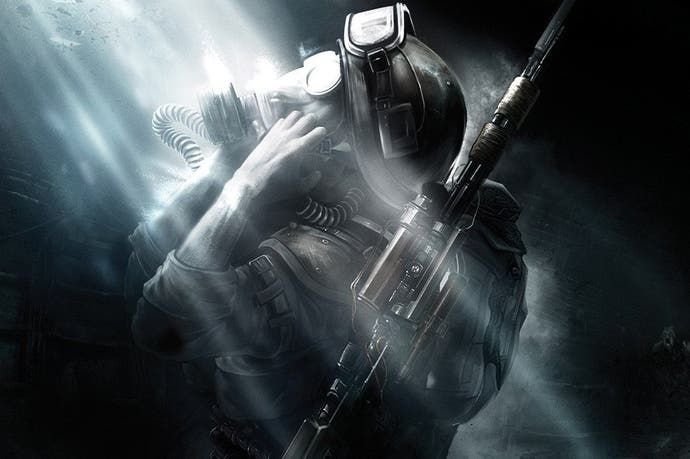Digital Foundry vs Metro Redux
Xbox 360 vs Xbox One. PS3 vs PlayStation 4. Is this the remaster you've been waiting for?
The PlayStation 4 and Xbox One remasters are coming thick and fast, bringing with them a wave of controversy - should developers be concentrating resources on porting over games they've already made? Are resolution and frame-rate boosts enough? Most crucially of all, do they represent value for money? The Metro Redux package from Kiev-based 4A Games puts forward a hell of a good case: you get two complete games for £30 and each title is available solus via digital delivery for those who already own one of the originals. But most importantly of all, the remastering work is very, very good. In fact, we'd say it's up there with the best.
Bearing in mind that there'll be PC, Xbox One and PS4 versions of Metro Redux to compare with the existing 360, PS3 and PC releases, that's a lot of potential comparison points. For this piece, we want to give you a taste of the work 4A has done, so we'll be stacking up the original Xbox 360 version of Metro 2033 with the Reduxed Xbox One game - as there was no PS3 release there, it's the natural choice. For Metro Last Light, we're breaking out the PlayStation 4 edition of the Redux and comparing it directly with PlayStation 3.
Curiously, it's the revamp of Metro 2033 that is the surprise package. 4A's debut release was highly regarded at launch and its technological credentials were first class when it was released way back in 2010, but comparing the original 2033 with Last Light reveals a quality gulf that a standard 'remaster' on new tech in 2014 would only emphasise. 4A's solution? To go back to Metro 2033 and do as much as possible to bring its quality level up to match its successor.
The result is fascinating. Comparing the original Xbox 360 and Redux Xbox One, we strongly suspect that where Last Light assets could help out, 4A used them where they could as direct like-for-like replacements: the mutated wild-life - showcased effectively in 2033's initial level - looks much better and character models are routinely switched out for far superior versions. Outdoor environments share the same basic geography (although we note some subtle tweaks) but the detail level is ramped up significantly - debris and other new geometry elements pepper the landscapes and additional blasted dead trees and foliage are commonplace.
The gloomy lighting scheme of the original game's outdoor environments has also been swapped out for a brighter, yet harsher look utilising 4A's global illumination technology. Atmospheric rendering gets an upgrade, and even the icy weather systems are improved with denser flurries of dynamically generated snow. First impressions are promising then - from a developer's point of view, remasters can be a learning exercise, a chance to get to grips with the new hardware. There's the sense that 4A went the extra mile, revisiting and retooling the older game to improve continuity with its more advanced sequel.
That push for continuity extends to the control system. 4A refined its interface in Last Light, bringing it more into line with the established norms in the first-person shooter genre while at the same time adding a new interface for dealing with the various equipment Artyom carries on his journey. Revisiting the original Metro 2033 on Xbox 360, the older control system feels clunky and ineffectual. 4A's solution is simple enough - the Last Light interface is ported over lock, stock and barrel to the older game.
The further you play into the Redux version of Metro 2033, the more the differences stack up. The subterranean sequences still hold up rather well on Xbox 360 - especially in terms of lighting - but the Redux improves things with small environmental detail boosts backed up by far superior precision in effects work, much higher detail artwork and what we suspect is a completely revised take on the lighting. It's definitely more nuanced - the harsher direct lighting of the original is replaced with a more natural look, with a great overall dynamic range. As well as looking better, there are gameplay benefits too - one particular stealth section proved highly frustrating on Xbox 360. Turning on your headlamp to see where you were going attracted death by bullets, navigating by memory led to death as you fell off the platforms and plunged to your doom. The frustration level is dialled back considerably in the Redux - it's still very dark, but there's enough visual detail to navigate effectively. It just feels better to play. Other gameplay enhancements include the improved AI, weapons customisation and stealth options from Last Light - and even the signature 'gas mask wipe'.
There's the sense that a lot of work has gone into improving the experience to the point where even the occasional minor encounter gets an upgrade. One bestial face-off in particular springs to mind - on Xbox 360 we would walk through an open doorway to be confronted by a creature dispatched with a quicktime event-powered knife to the side of the head. In the Redux, the doorway actually has a door. As it opens, the beast leaps at you and an entirely new jump-scare take on the sequence plays out. Other changes are more subtle - a jarring third-person cut-scene gets the chop in favour of a first-person version more in keeping with a game viewed entirely from Artyom's viewpoint. In essence, we're not looking at a wholesale changes to the game - just a subtle retooling in places, backed up with visuals, lighting and effects that are a clear upgrade over the original.









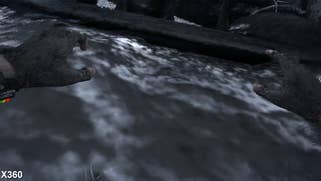

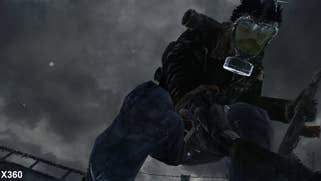

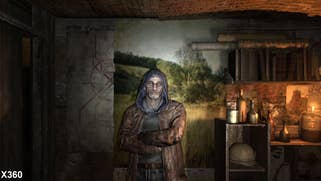
The original Xbox 360 version holds up surprisingly well considering it's now over four years old - but it's interesting to note that the areas that have aged the most aren't really so much different in the Redux. Most notable is character definition and in the way they move. Not all of the character models are swapped out with higher detail alternatives and those do stick out somewhat. Facial and body movement is a step behind Metro Last Light, which in turn falls short of the more advanced performance capture seen in latter-day last-gen titles. However, in combat, 2033 does see improvement in the animation as bodies stagger and crumple from the impact of bullets and knives. It's important to point out that the Redux doesn't try to re-invent the Metro titles as modern AAA games with all the bells and whistles - but there is the sense that 4A has put a lot of work into 2033 so that it comfortably compares with the quality level set by its sequel. Together, the two complement each other nicely.
That being the case, it's safe to say that the enhancements in Metro Last Light aren't quite as wide-ranging and extensive as those seen in the 2033 Redux. In truth, they don't really need to be. 4A's sequel was created for an age where 2.5K monitors were already established in the core PC gaming community, so there's little point bolstering the quality of the existing assets when they're already so detail-rich. Last Light on PC was both optimised over 2033 and scalable: ramp up the settings and even a GTX Titan graphics card could crumble, yet at the same time, on the lower quality presets, it's perfectly playable on Intel integrated graphics at 720p.
In effect, development of Last Light on the new wave of consoles is all about 4A Games picking and choosing its battles to get the best possible balance between image quality and performance. Some of the high-end options found on PC don't make their way across to the Redux - if tessellation is utilised, it's to nowhere near the same degree as the PC version for example, and extreme rendering options like super-sampling are obviously off the table too. 4A has utilised the expansive memory of the new wave of consoles to retain the high-end detail level of the PC game, then aimed for the prettiest locked 60fps experience it can deliver.
Comparing the Redux PS4 version of Last Light to its PS3 predecessor is an interesting experience. It's the same game but the level of refinement the new version brings is obviously a highly worthwhile upgrade. The raw mathematics explain much of the differential: 4A opted for a 1152x640 framebuffer on PS3 (1280x672 on 360), while the PlayStation 4 offers up the full monty at native 1080p. The additional pixel-count gives Last Light's intensely detailed texture work the real estate to shine - this more than anything offers up a good proportion of the top-end PC experience on your new console.
On top of that we note a more muted range of upgrades over the original game compared to the more radical revamps found in the Redux edition of Metro 2033 - once again, the outdoor scenes are given a refresh (particularly in terms of lighting), but there's also the sense that interior illumination has been given an additional parse too. Light reflects more accurately over materials - a subtle difference perhaps in the heat of the action, but particularly in close-ups it works beautifully in concert with the higher resolution.
At its absolute best, Metro Last Light still holds its own against even the most beautiful of current-gen titles - the first outdoor scene in particular looks simply sumptuous on the new wave of consoles. However, it remains rooted in the past - just like Metro 2033, breaks for loading are commonplace, and while improved over its predecessor, character modelling and animation have clearly moved. It's interesting to note that 4A itself discussed its own take on current-gen character modelling in our last tech interview.

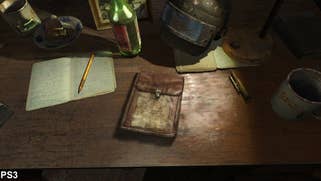
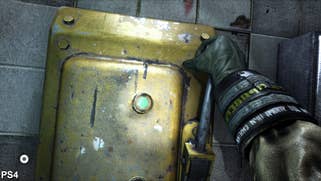

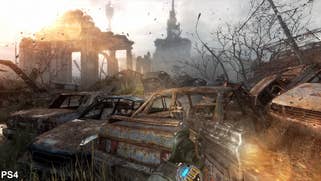

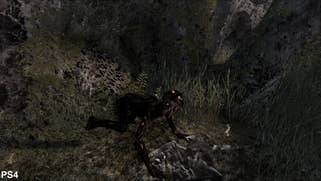
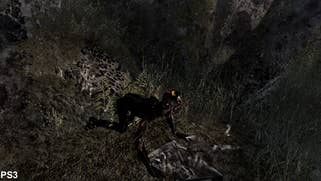
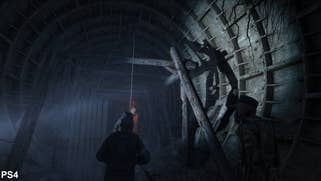

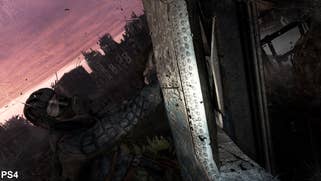
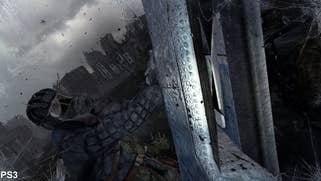


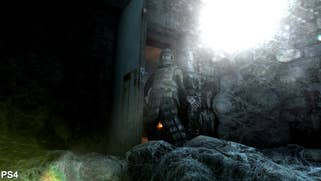
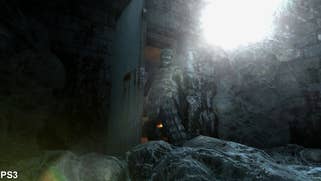
So let's talk performance. In our recent article on the last-gen games that were next-gen before their time, we were bullish about 4A's achievements when it comes to performance based on experience the Metro Redux PS4 E3 demo. In an age where marketing often promises 60fps only for the final product to fall short, it's refreshing to see that 4A's approach is brutally uncompromising. There is indeed no 60fps 'target', or even what we like to call a 'perceptual' 60fps - where performance often dips below the ideal, but not to any great, noticeable detriment to the experience. This looked absolutely rock solid.
Hands-on time with both versions of the game confirms that to all intents and purposes, performance is locked. We have two videos here drawn from our comparison captures. 4A utilised adaptive v-sync on its last-gen titles - capping performance at 30fps, scanning out frames as soon as they are ready should the engine fail to meet its 33ms per-frame budget (causing screen-tear). Adaptive v-sync is used again on the Xbox One and PS4 builds, only the performance cap is increased from 30fps to 60fps, with a much more stringent 16ms render time for each frame.
So the question is to what extent the game fails to hit its budget. On PlayStation 4 running Last Light, we see a solid 60fps from start to finish (screen-tear is only evident on FMV cinematics, curiously enough). Across 26,000 sample frames, each is entirely unique. For our Metro 2033 Xbox One captures, just two frames are dropped - one accompanied by a fleeting screen-tear cascade, again proving that adaptive v-sync is in place. What this means is that the Metro Redux offers up a consistency in visual and controller feedback that is transformative in nature, significantly improving the feel of the interface between player and game. In a first-person shooter, that kind of improvement is priceless.
Additional analysis:
We'll cover like-for-like performance on Xbox One and PlayStation 4 in a forthcoming pre-launch update, but we're going into that testing with the expectation of very close results. Differences kick in at the resolution level: PS4 hits its 60fps target at full 1080p, while Xbox One currently stands at a curious 912p native resolution - that would be something in the region of 1620x912 (assuming square pixels). The original plan for Xbox One was to ship at 900p, but the June XDK update (returning the Kinect GPU resources to developers) has allowed for a tiny resolution boost - our guess here is that 4A opted to bank the additional resource to help lock down that all-important frame-rate rather than really push the pixel-count. If so, that's the right trade.
As it happens, there's not much in the way of difference between Xbox One and PS4 - high contrast areas that would expose jaggies are few and far between (both Metro titles are mostly played out in very dark environments) and the Redux's post-process anti-aliasing does a good job in smoothing out edges. The biggest difference comes from the level of 'shimmer' generated by post-processed smoothed-off geometry - this is marginally more noticeable on Xbox One.
In summary, Metro Redux works for us. What's clear is that this is no smash and grab raid on the fans - 4A has put in the work to bring 2033 up to standards with it successor, with both games significantly improved with the move to higher resolutions and that locked 60fps. These aren't state-of-the-art shooters - they are still the games of their time - but they do a good job of respecting both the original releases and the new hardware they're running on.
And of course, this is far from the end of the story - Metro Redux is coming to PC too, where the idea of providing a truly improved experience over the original releases is much more challenging than a last-gen vs current-gen comparison. We'll be looking at that soon.
